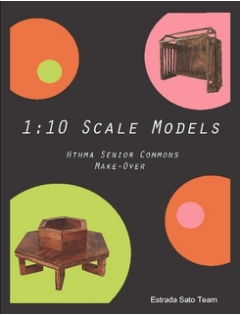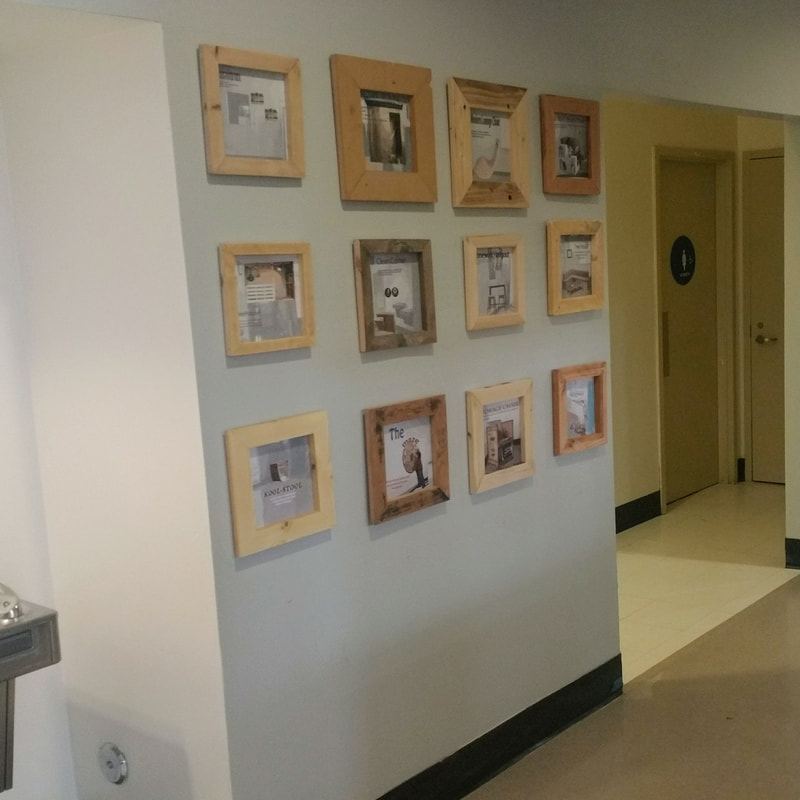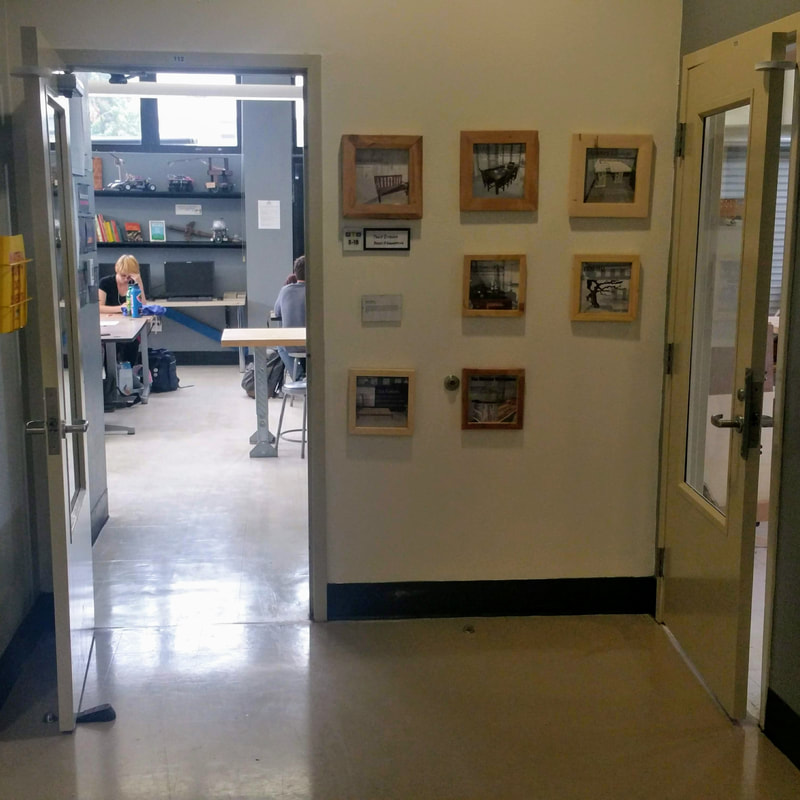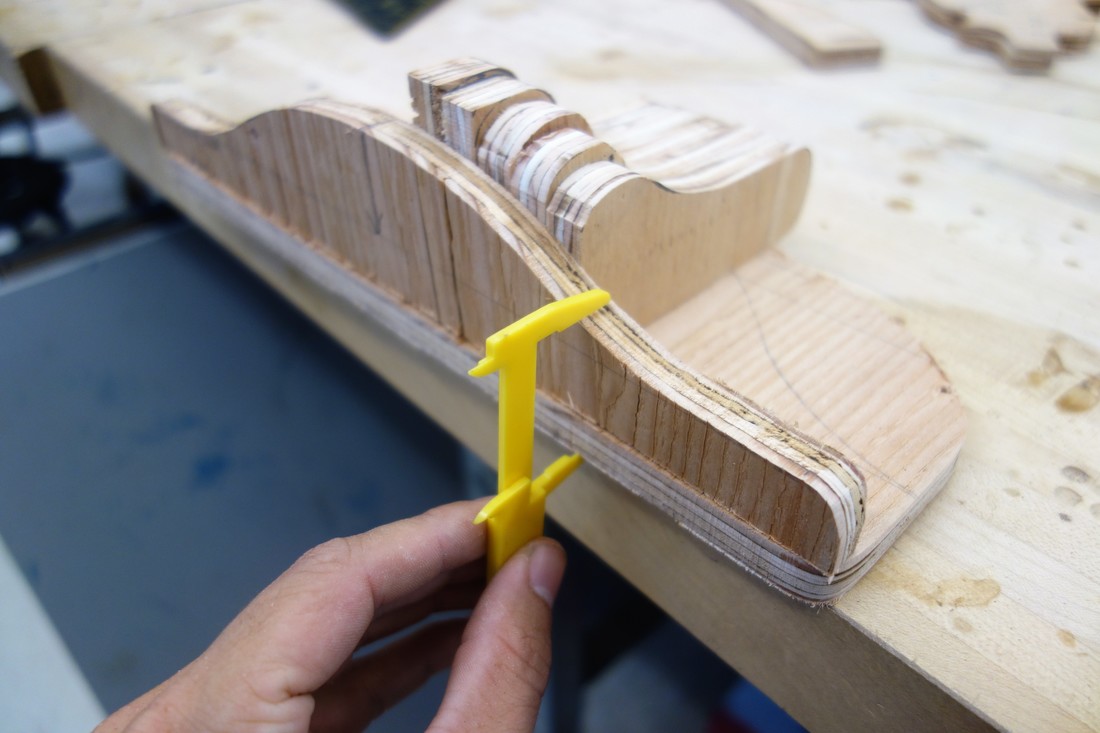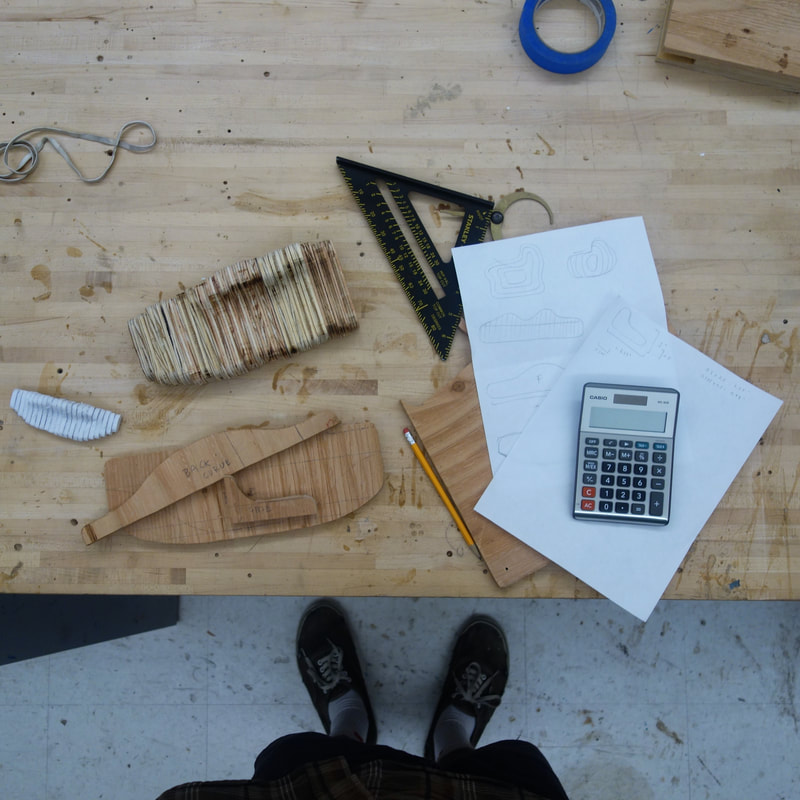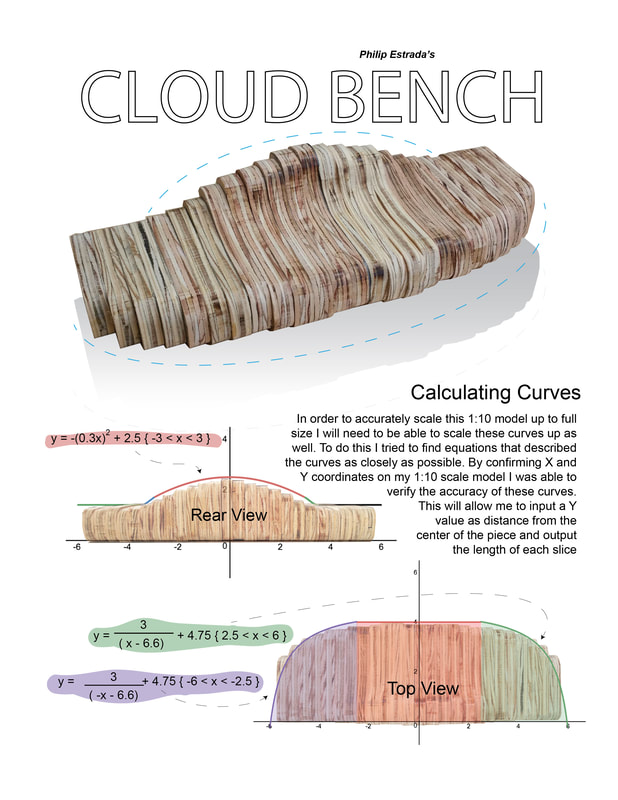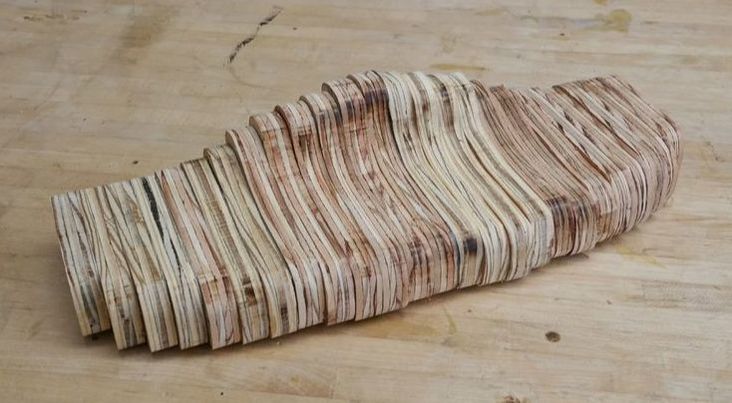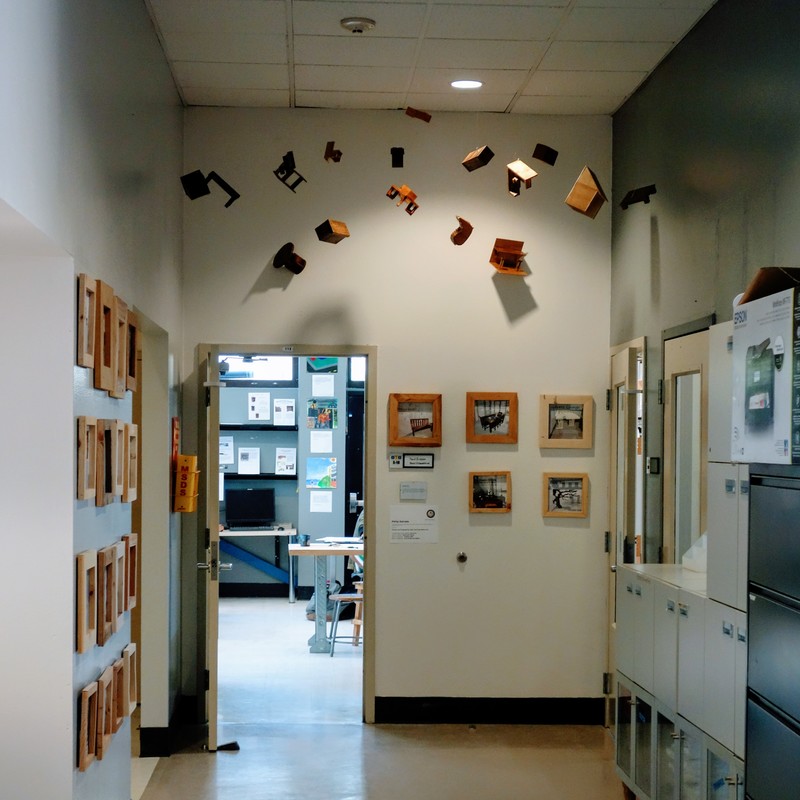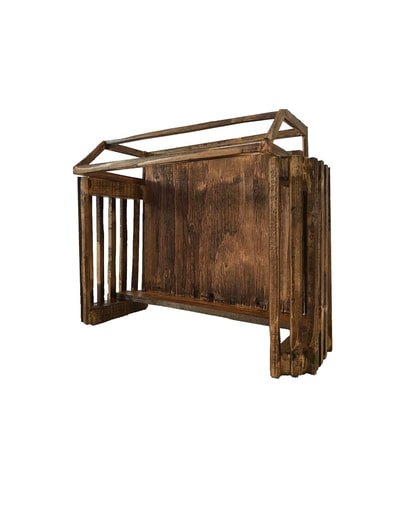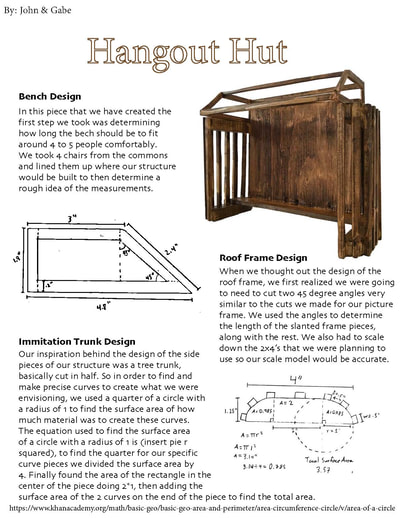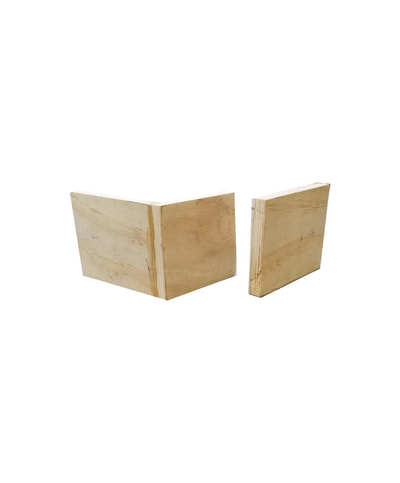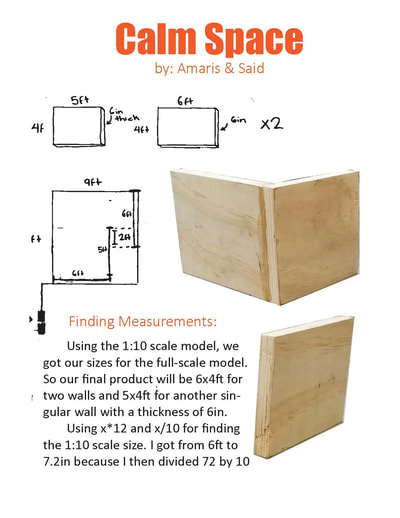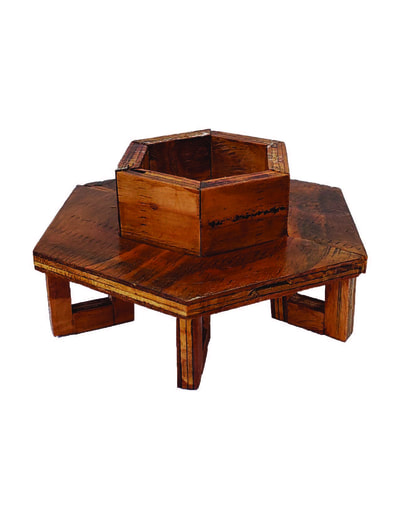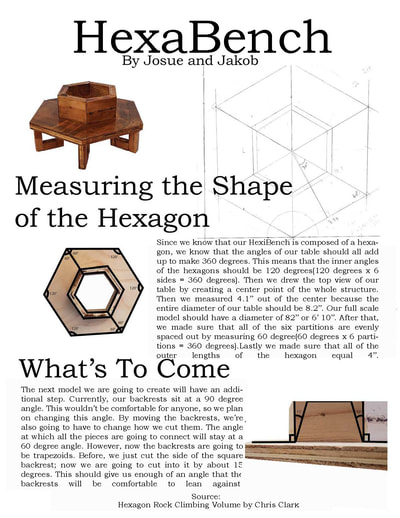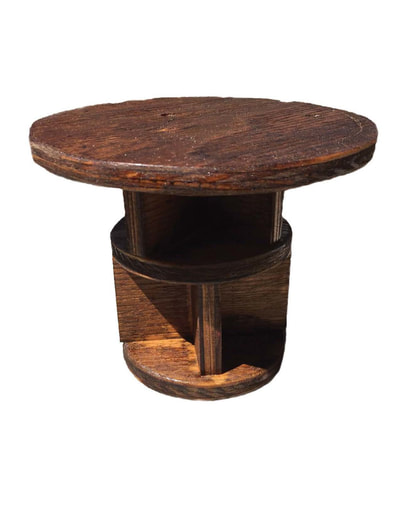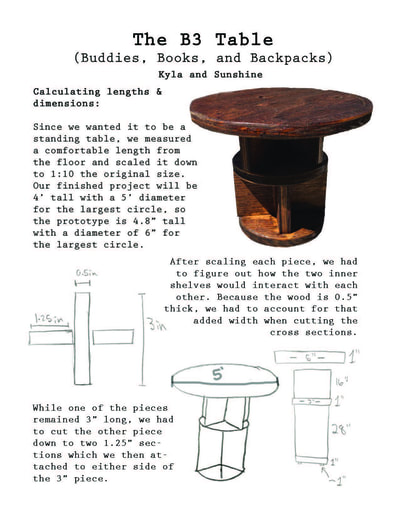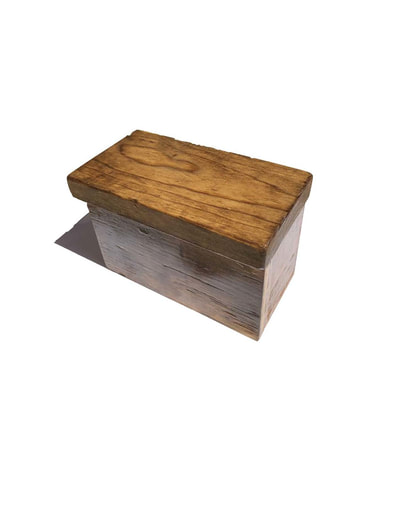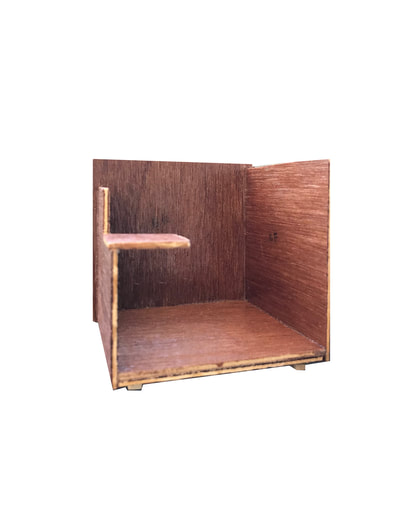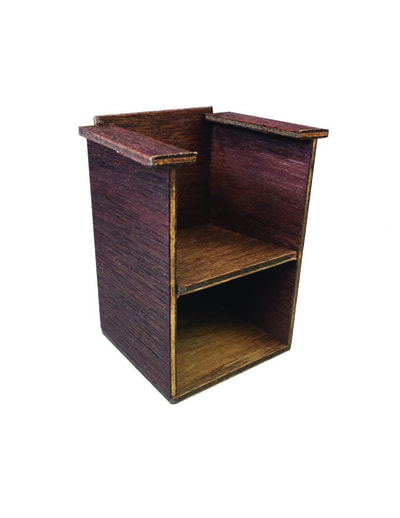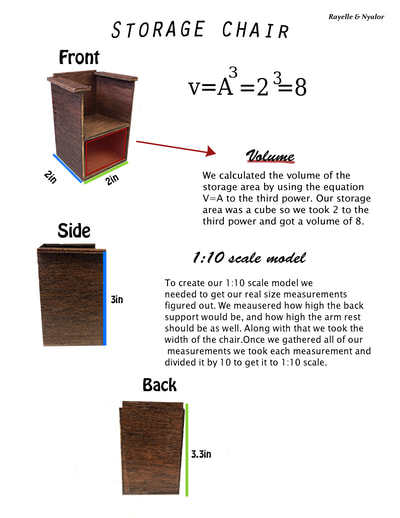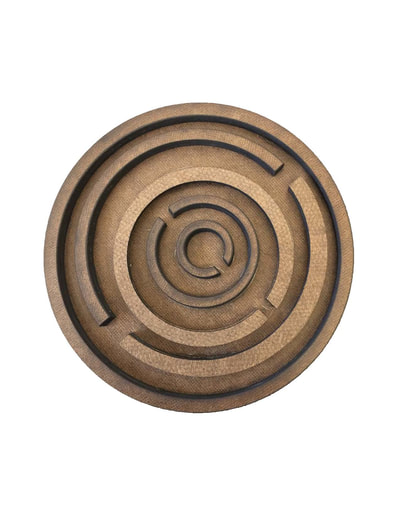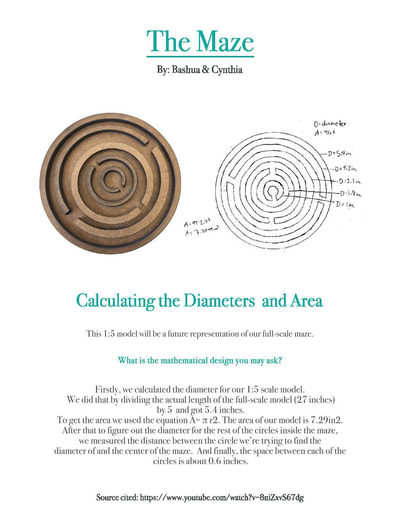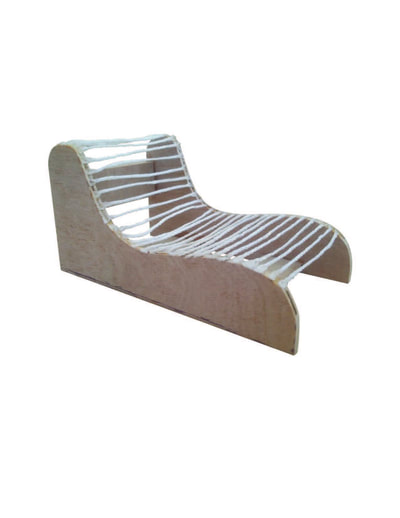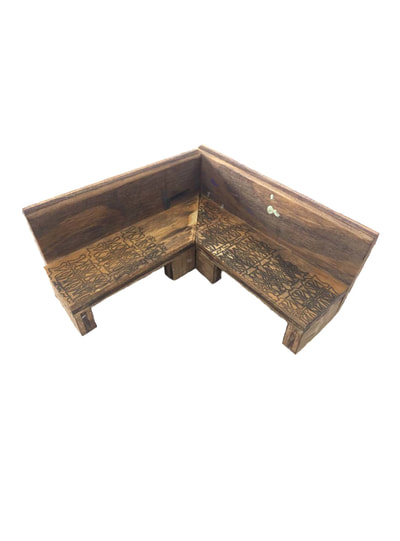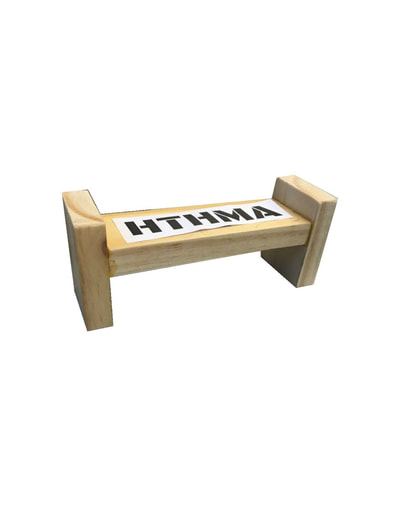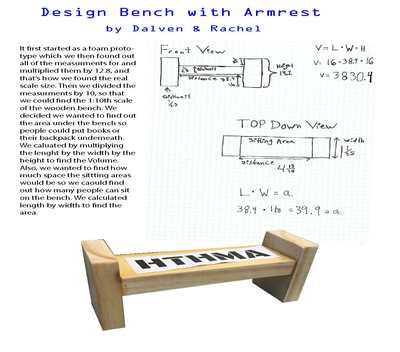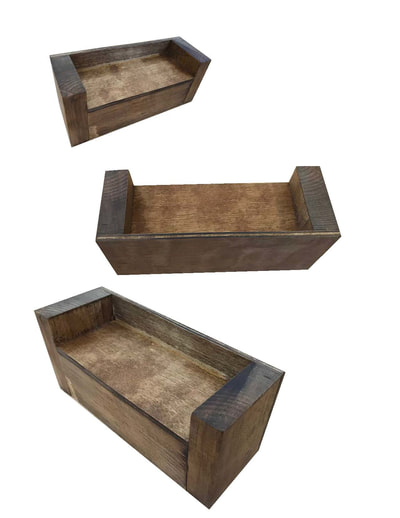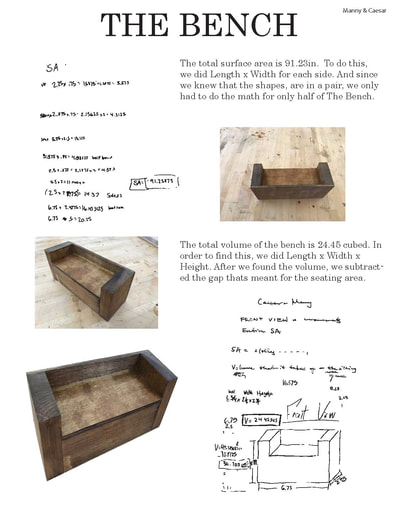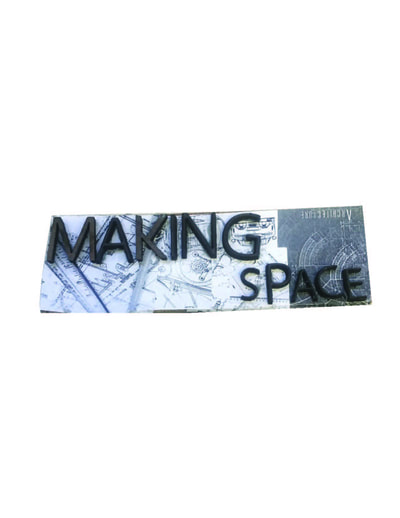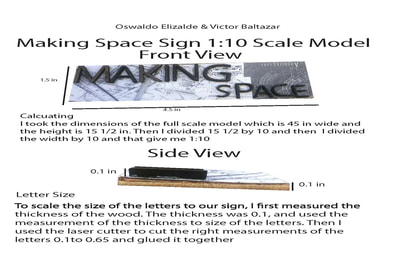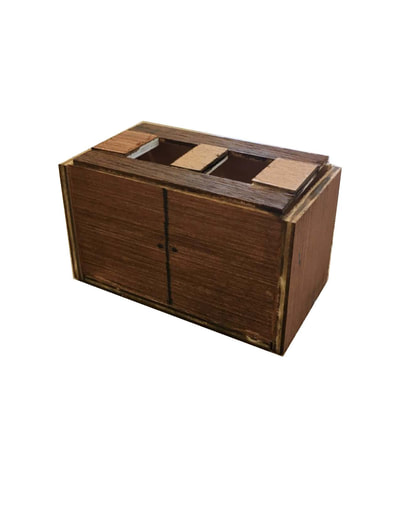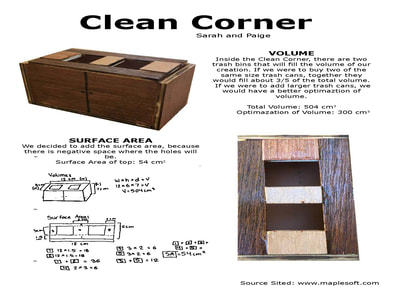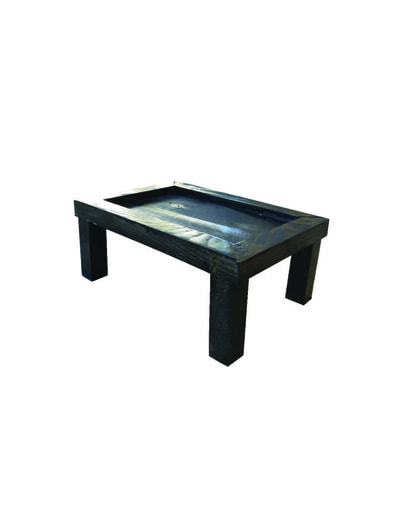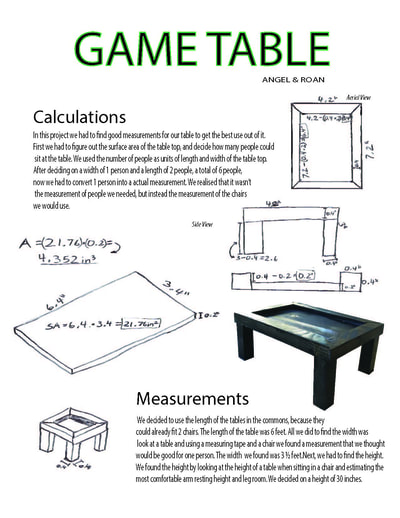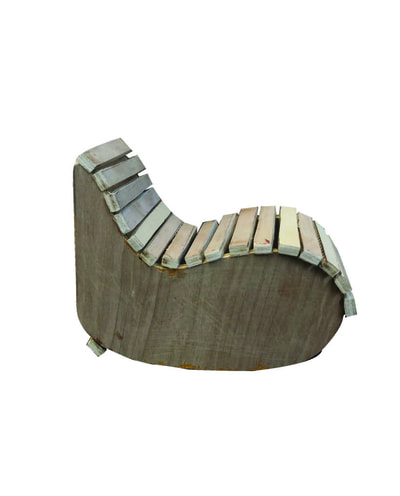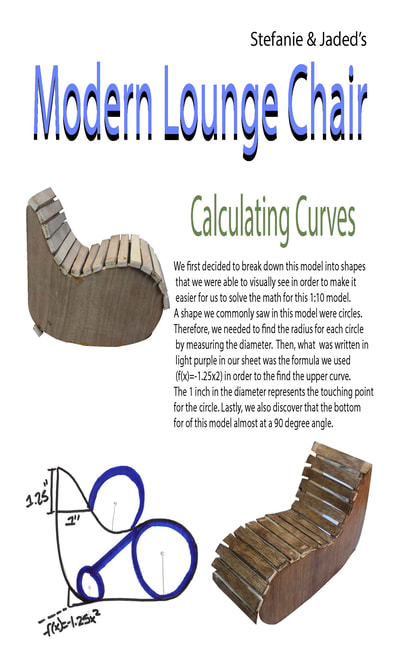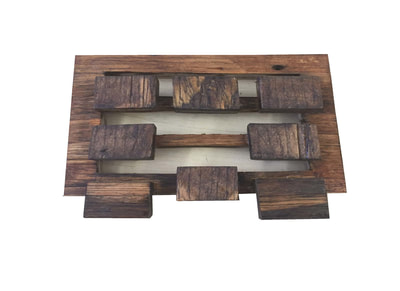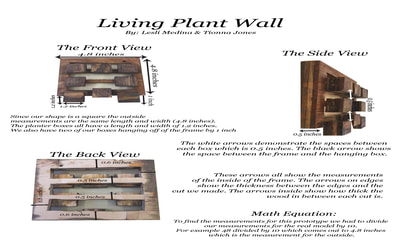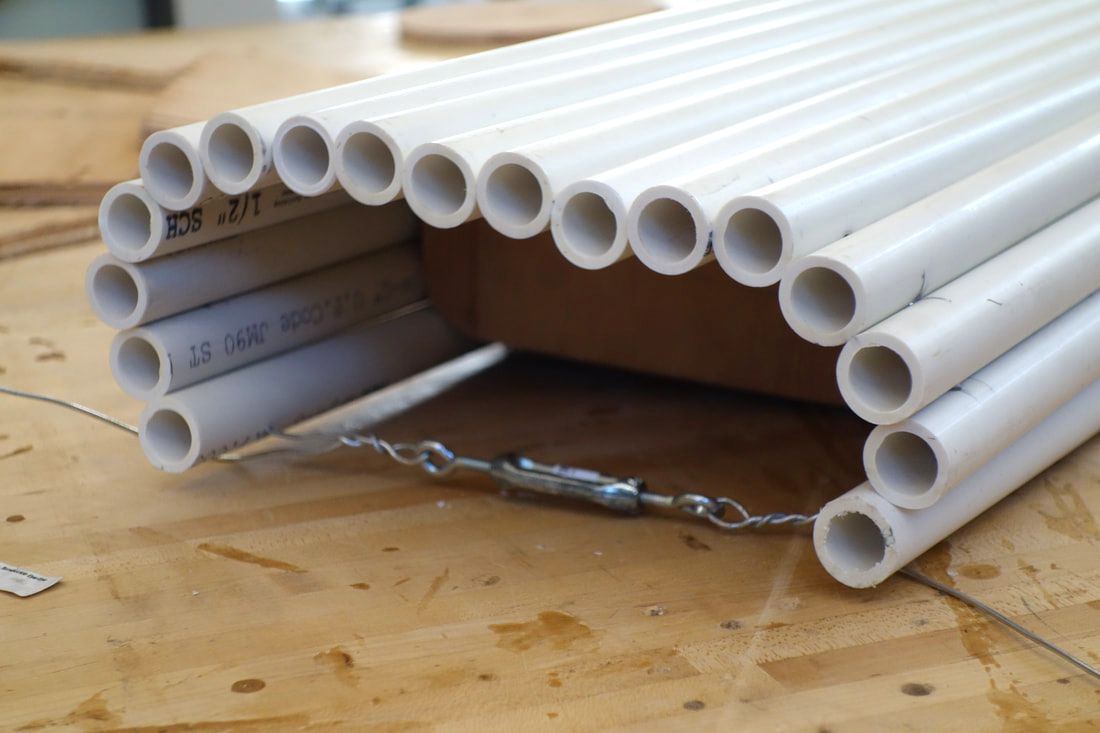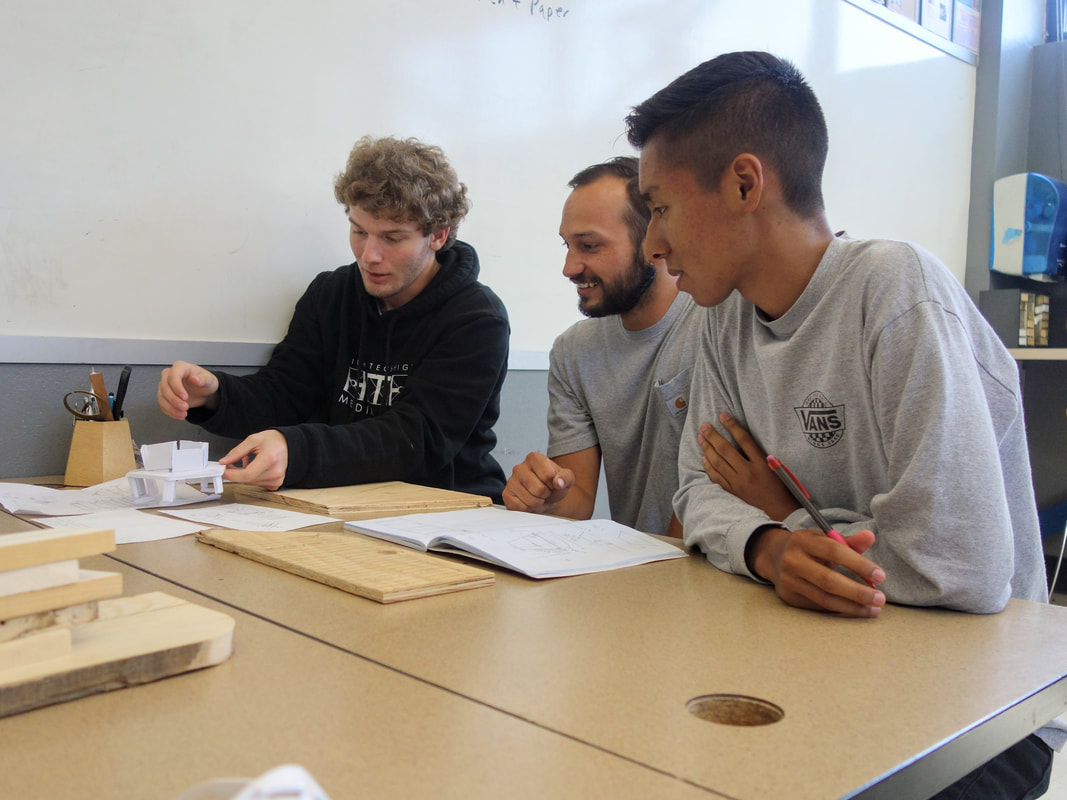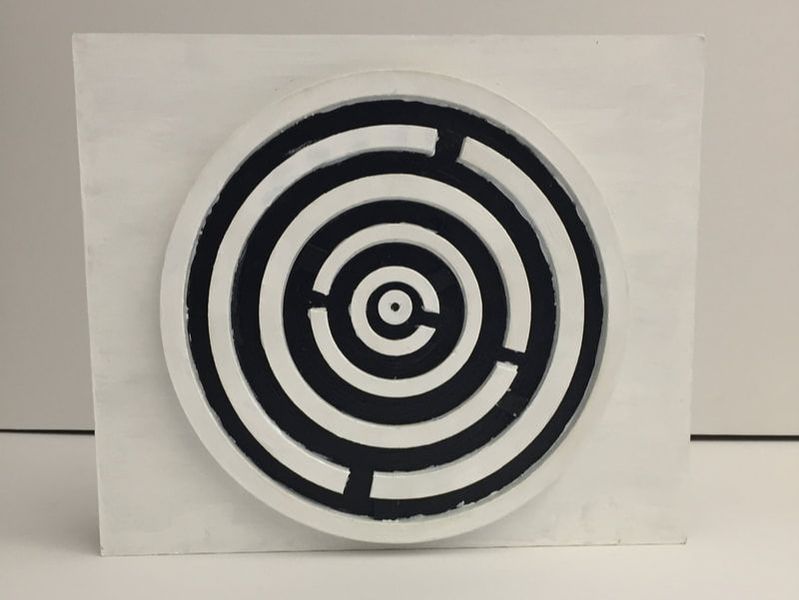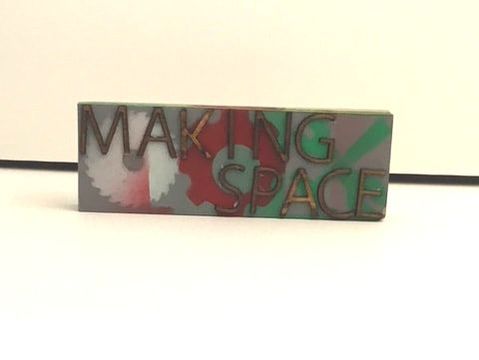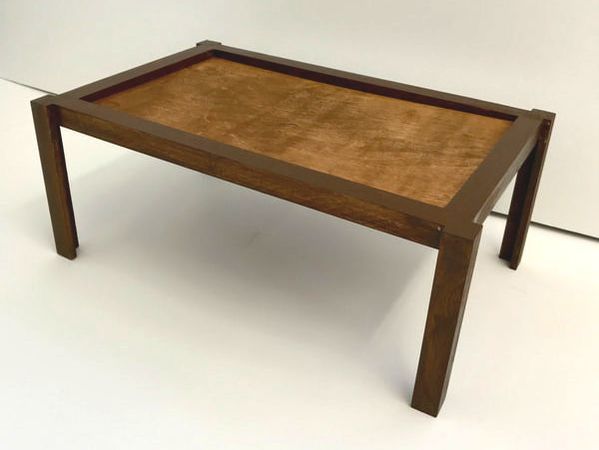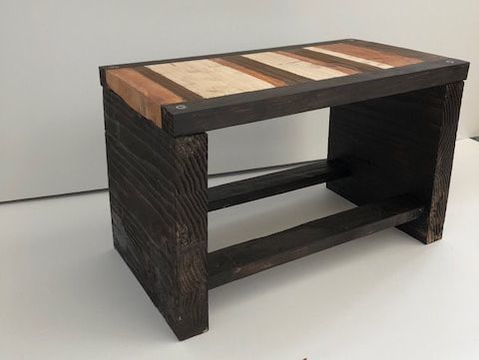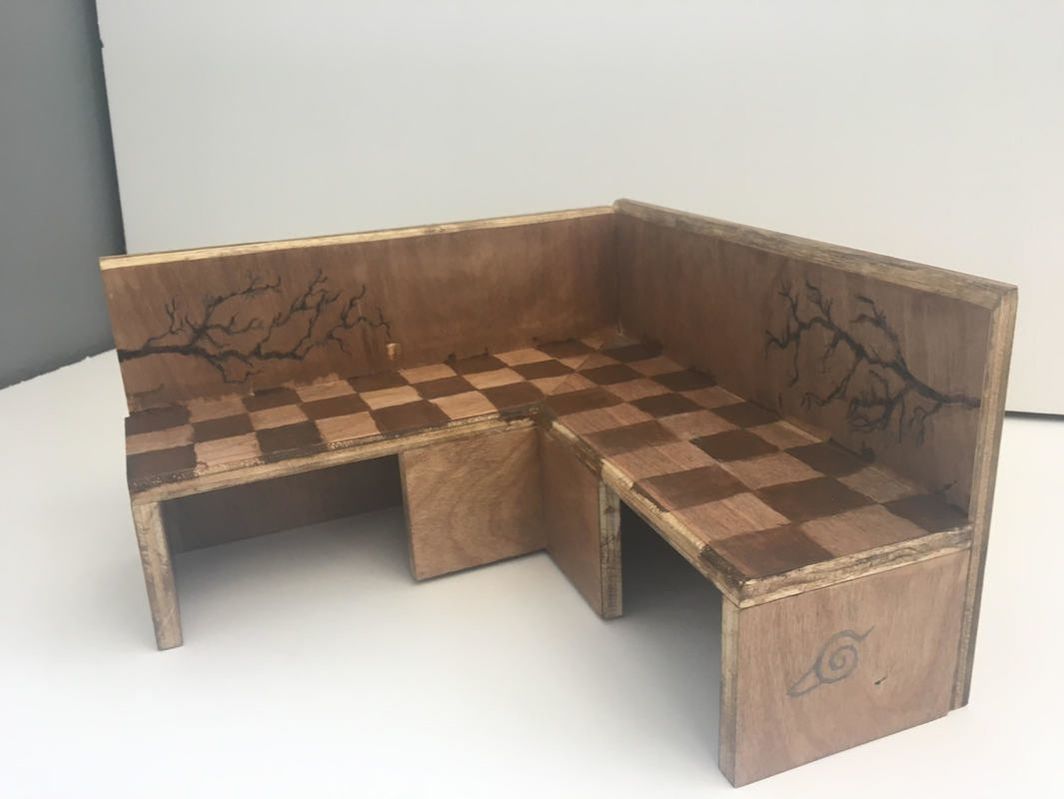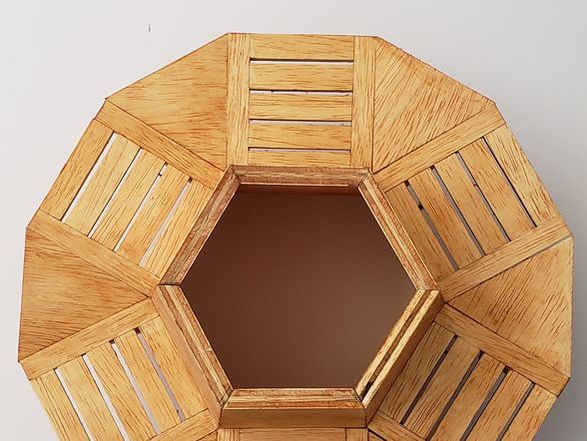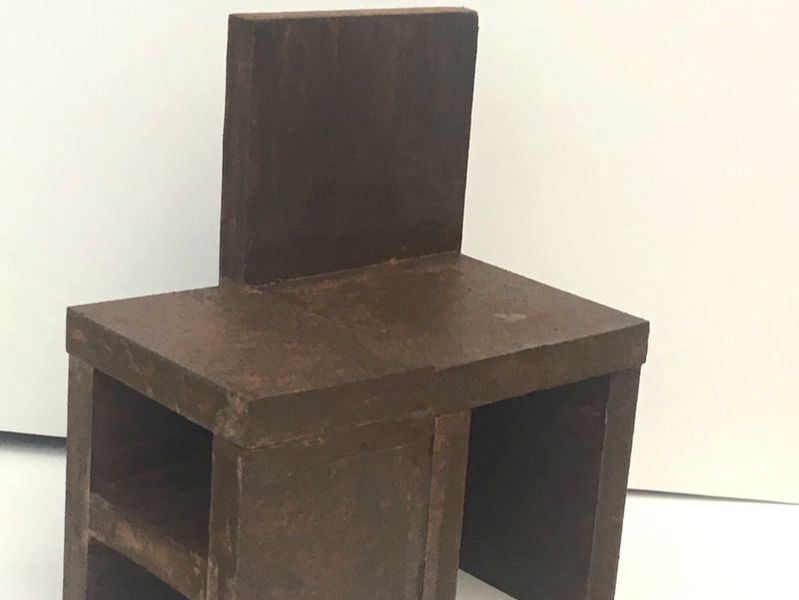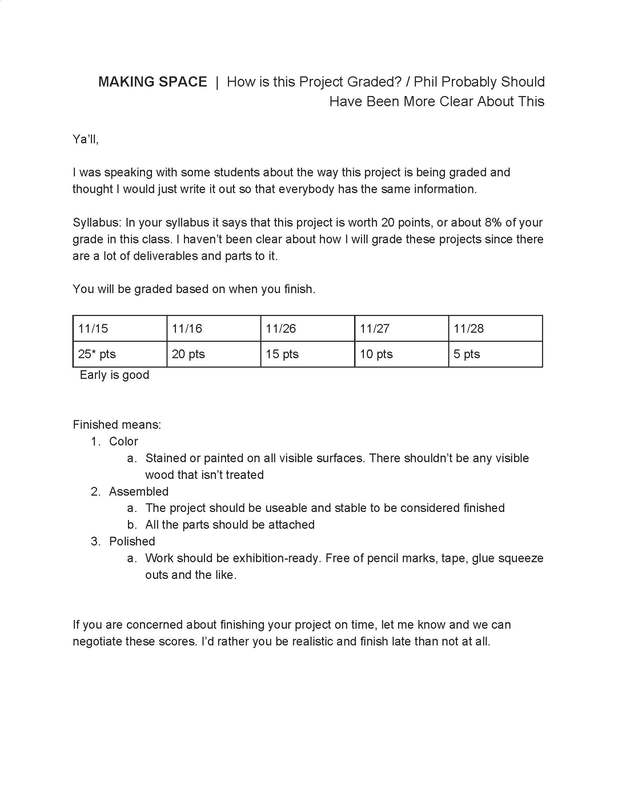-
Projects
- Talkin Trash
- Something New
- Nothing New
- Shift
- Ritual
- Colors and Shapes
- Tensegrity
- Lakeview Cut
- Second Nature
- It Gets Funkier
- Making Space
- Rotational Volumes
- Changed By Chairs
- Gearboxes
- Pendulums
- Microscopic Images
- Inspraytion
- 60 Word Short Stories
- PBL Illustrations
- Foundations Podcast
- Inclusive Strategies Podcast
- Helpful Links
- Blog
- About
Purchase the books created during this project
Description
This semester I moved into a new space. Part of the way that I get comfortable in a new place is by reorganizing it and building things to add to it. Identifying needs in a space and designing solutions is a rewarding process. Outside my new space is an area that was previously a classroom but is now the senior commons. It is a mess and does not foster community so seniors in my class will be remodeling the space and shaping the way that they are remembered by future classes.
Planning/Failing
|
|
I'm lucky to be able to work in a new shop and classroom. I knew the teacher who was here before and they left a ton of great material, especially wood. Excited to make something and begin making the space my own I collected a bunch of cool old pieces of wood and made this coffee table. The frame was already in the shop so making the top was a snap.
Unfortunately I worked too quickly. While I like the final piece the table doesn't fit anywhere in the room and doesn't have a purpose or a place. I needed more planning and purpose. My second attempt was this stool. I got really excited to make a stool using left over wine barrel wood, which had been a big feature of one of the preceding teacher's projects. I didn't want to throw all that oak away and so I decided to make this stool.
I made a lot of mistakes, but learned how to use the lathe and planer. I was working quickly and not very carefully and chipped the wood in a lot of places. Even though I intended to make multiple drafts of this stool I was disappointed with the first draft outcome. Additionally I realized how much work was involved. I had planned to make a set of stools for the class and that is just way too much work. So I needed a design that both honored the space and context of the shop and had a destination in mind My final design was this bench. As I got to know the space I recognized this really lovely space outside of the exit door. The patio and tree make this a wonderful place to sit. I used a lot of the barrel wood and am really happy with the result. Because I had the destination in mind for this seat it really seems to belong and adds something to the space that wasn't there before. It's immediately recognizable as barrel wood and reminds people of the previous teacher's great idea to incorporate that material into projects.
|
What I learned from building furniture
1. When making something new there needs to be a destination in mind. While a chair is a chair and a table is a table, a piece of furniture that is designed specifically for one space is much more impactful.
2. Thinking about how the final piece would shape people's perception of me was a powerful motivator. I made design choices and material choices that reflected how I wanted to be known and remembered.
3. Make mistakes in cheap material first. This should have been obvious but I was really excited to start building stuff in the new shop.
Reflecting on this experience made me want to share it with my incoming seniors. Like I said above their senior common area is a mess and they deserve a great space to study and connect. I will guide them to identify how they wish to be remembered and known by the rest of the school and then design the space to reflect that. They will also take into account the genuine needs and desires of the rest of the senior class and juniors who will use it next year.
2. Thinking about how the final piece would shape people's perception of me was a powerful motivator. I made design choices and material choices that reflected how I wanted to be known and remembered.
3. Make mistakes in cheap material first. This should have been obvious but I was really excited to start building stuff in the new shop.
Reflecting on this experience made me want to share it with my incoming seniors. Like I said above their senior common area is a mess and they deserve a great space to study and connect. I will guide them to identify how they wish to be remembered and known by the rest of the school and then design the space to reflect that. They will also take into account the genuine needs and desires of the rest of the senior class and juniors who will use it next year.
Week 1 - Framed Advertisements
Making a picture frame is an excellent starter project for learning the tools and techniques of woodworking. I decided to use this build as a way to introduce everyone to the shop and building. The frame is filled by each group's idea for what to add to their senior common space. We will display these in our common space and in the school so that the rest of the classes see what we are planning to build.
Reflection on Week 1:What Worked:
Starting the project on day 1 was very successful. Being able to put materials on the wall and produce something in the first week has already begun the momentum of the semester and students seem excited to keep working on their ideas. What was surprising: The variety of ideas is my favorite part of this work. Everyone had the chance to make something that interested them and make choices in the design and look of the piece. Holding to my constraints helped the final curation really look deliberate. What I will never do again: In this starting project I compressed the timeline as much as I could. There's no reason to go slow at the beginning of the semester because I want to value the time that I have with the class. For a workshop class it makes sense to start building skills with tools and materials as soon as possible so that by the time we are building the final projects, the class is able to perform advanced techniques. I never want to start a semester with anything other than a First Friday Deliverable |
|
Week 2 - Reflecting and Moving Forward
After finishing the Framed Advertisements it's important to capture what each person has been learning. The frames are a skill building project (illustrator, building, tools...) and so taking the extra step of identifying what's been learned is key. I was inspired by another teacher to make summary posters where each student records what they learned in a creative and visual way. I used this technique to make the Illustrated PBL Notes and wanted to use it again to turn the students thinking into something beautiful.
|
|
Week 2 ReflectionWhat worked:
Creating an example to show the class is always really helpful. I could spend 30 minutes outlining everything required for one of these posters or just show the group an example and answer questions as we go. I also outlined a 3-4-5 rubric for the work which I think helps people set goals and make plans. What was surprising: For many of the class this was their first real experience with illustrator. I didn't intend for this to be a full week long project deliverable but I'm glad we took the time because a lot of the work kept improving with critique and revision. I'm still acquiring files from the class to display here but all the work shows thought and care. What I will never do again: When I set up this classroom I removed half of the computers because I never wanted to have a project part where the whole class needed to be on a computer for extended periods of time. Well I must have forgot about that because I asked everyone to make a detailed poster on the computer that took about a week. Not having enough computers was really annoying and I'm not sure how I missed that. In the future I think I'll have partners make individual first drafts but combine their information on the final piece. |
Week 3-4: - Prototyping at 1:10 Scale
My Work
As committed as I am to doing the project work before my students, I've been getting behind in this instance. Because the actual project took such a long time to form I've only been staying about a week and a half ahead of the class. But I'm really glad I'm sticking to the policy of not asking the class to do anything I haven't done myself. In a way it's nice to not be so far removed from the work because the experience is fresh as I'm showing the class.
|
Problem Solving:
I've been spending my prep and some after school hours trying to figure out how to make this curvy bench out of wood. I ended up making this little foam prototype after trying a few different designs. Prototyping is awesome because you get really quick feedback about how complicated a design is and how much work it will take to construct full scale. Once I was happy with the rough model I had made scaled it up to make a wooden version. This serves 2 purposes: First, it keeps building skills with the tools in the shop and wood as a material, and second it is just another chance to refine a design. I was much more specific with the measurements and the curves of this design the second time around. This whole process is just a mini project. I had spent a few hours thinking about how I should scaffold this section and tried to anticipate how the group would try to tackle the process. Once I just sat down and built the thing it's easy to retrace my steps and there's the scaffold. Constraints: Prototyping also helps me identify the constraints that I will place on the class. For example, the foam prototype must fit in ones hand, and the wooden prototype must be at a 1:10 scale to the real one. By placing clear constraints on the work I help funnel the process into a more predictable pathway. Student (and my personal) projects are like liquids: they will fill whatever container they exist in, so as the facilitator you've got to be clear about what is and is not allowed so that they can be fully creative within the limits. Otherwise they will be overwhelmed and get stuck. Honestly I'm a little nervous that I haven't placed enough constraints on the project as a whole. By letting the class pick anything they find interesting to add to the commons I might be setting myself up for a management tangle. I hope that the prototyping process is as much a reality check to the students as it was to me. |
Student Work
Reflection on Week 3 and 4
What worked:
Because each group working on a design that they dreamed up, all of the math and prototyping work has been going very well. Each of these pieces is completely their project; I'm just cheering them on and pointing them to the correct tools to use. I'm glad that I gave enough choice to the students so that they can make something that they are proud of.
What was surprising:
Because I've been pushing to have a product every week the class has a large body of work to display already. For back to school night many parents were surprised that everything had been done in only 3 weeks. Every deliverable has been compressed as well: about half of the class has the work done on time and the other half will come in at lunch to finish or request an extension. I'm surprised by how hard the class is willing to work.
What will I never do again:
I attempted to have the classes critique each others work this week but it messed up the timing. The morning class critiqued the afternoon classes work, but then didn't have critiques to work off of when polishing their work. My real goal was to begin cross-pollenating student work between classes so that they will see the cool ideas that the other sections are having. There is probably a better way to do this that doesn't hamstring the students who critique early.
Because each group working on a design that they dreamed up, all of the math and prototyping work has been going very well. Each of these pieces is completely their project; I'm just cheering them on and pointing them to the correct tools to use. I'm glad that I gave enough choice to the students so that they can make something that they are proud of.
What was surprising:
Because I've been pushing to have a product every week the class has a large body of work to display already. For back to school night many parents were surprised that everything had been done in only 3 weeks. Every deliverable has been compressed as well: about half of the class has the work done on time and the other half will come in at lunch to finish or request an extension. I'm surprised by how hard the class is willing to work.
What will I never do again:
I attempted to have the classes critique each others work this week but it messed up the timing. The morning class critiqued the afternoon classes work, but then didn't have critiques to work off of when polishing their work. My real goal was to begin cross-pollenating student work between classes so that they will see the cool ideas that the other sections are having. There is probably a better way to do this that doesn't hamstring the students who critique early.
Week 5-6: 1:5 Scale Prototypes
My work:
|
This week we will be rebuilding our projects at a 1:5 scale. Groups are aiming to resolve any issues present in the prototypes and make as close to a final version as possible. The larger scale makes joinery more important and lets everyone practice the real assembly methods. It's a cool blend of model making and real furniture making. The first week was spent cutting and assembling models and the second spent learning Sketchup and polishing the models.
Each group will be responsible for the physical model, a Sketchup 3d model, and the proposal at the end of the 2 weeks. |
Student Work
|
|
|
Reflection on Week 5-6
What worked:
I have never had a professional or expert come in and do critiques on student work before. It was a rich experience for me and the students. James was super nice and brought a lot of expert knowledge and techniques to use in assembly and construction. It also made for a nice motivator for the class because everyone wanted to have something to show when the professional arrived. I want to involve more experts in future projects.
What was surprising:
The class is running very smoothly. 75% of class time is work time and the class needs all of it. They are in the shop building or on the computers editing all period and I still have students come in at lunch and after school to complete more work. I think this is due to 2 things
1. There was sufficient student choice in the project. Each group or individual is making something that they chose and is interesting to them. They have become the expert in it's design and construction and are motivated to make it better with each iteration.
2. The project is leading the curriculum. Everything we do in class is directly connected to finishing the project. There is no fluff or time wasting with anything other that the project. Because we are so focused, students rarely are in a place where they feel like they don't know what we're doing or what's next.
What will I never do again:
I'm still working to figure out how long each deliverable will take for the class to complete. For this one I took it day by day, checking in and getting feedback about how long was needed. This backfired a little because I failed to prepare the materials for the next part of the deliverable. Once I had a few students start to finish they ran out of things to do. I never want to run a deliverable without the next 2 or 3 parts planned and documented and ready to deploy so that I can always give fast workers the next part.
I have never had a professional or expert come in and do critiques on student work before. It was a rich experience for me and the students. James was super nice and brought a lot of expert knowledge and techniques to use in assembly and construction. It also made for a nice motivator for the class because everyone wanted to have something to show when the professional arrived. I want to involve more experts in future projects.
What was surprising:
The class is running very smoothly. 75% of class time is work time and the class needs all of it. They are in the shop building or on the computers editing all period and I still have students come in at lunch and after school to complete more work. I think this is due to 2 things
1. There was sufficient student choice in the project. Each group or individual is making something that they chose and is interesting to them. They have become the expert in it's design and construction and are motivated to make it better with each iteration.
2. The project is leading the curriculum. Everything we do in class is directly connected to finishing the project. There is no fluff or time wasting with anything other that the project. Because we are so focused, students rarely are in a place where they feel like they don't know what we're doing or what's next.
What will I never do again:
I'm still working to figure out how long each deliverable will take for the class to complete. For this one I took it day by day, checking in and getting feedback about how long was needed. This backfired a little because I failed to prepare the materials for the next part of the deliverable. Once I had a few students start to finish they ran out of things to do. I never want to run a deliverable without the next 2 or 3 parts planned and documented and ready to deploy so that I can always give fast workers the next part.
Week 7 - 8: 1:5 Scale Display Models
Deliverables:
1. Next Draft of Project Proposal document including Sketchup model, Physics discussion and image of 1:5 Prototype.
2. 1:5 Scale Display Model of project
2. 1:5 Scale Display Model of project
Reflection on Week 7 - 8:
What worked?
All the scale models came out very precise and detailed. By now, the class is very familiar with the tools and building and so they are working independently. Because each group is working on something that they designed, they are really experienced with their project and work very efficiently. Thus far I have only done project work in class, and I think it shows. The designs are sophisticated and interesting and the students are developing real skills with the tools. I hope I can stick to my commitment to only work on the project. It is certainly tempting to take a day off to teach a side lesson or do something not directly related to exhibition and the project.
What was surprising?
A pattern has emerged in the class work where we spend one week building and the next week designing/documenting. I think that this is positive as the projects keep improving with all the time we are spending revising and editing. The natural ebb and flow of the class is nice as well because the students know what to expect with each day. This wasn't intentional but I'd like to try and replicate it.
What will I never do again?
I've been trying to answer a difficult question this year: How do I know how long something will take the class? So far I've been just multiplying the amount of time it takes me to finish something by 5. If a deliverable takes me 2 hours than I need to give the class 10 hours to finish it. This about accounts for the way students work in groups, crowding at the machines, and start up/wind down times in a classroom. However I am not sure what the correct feedback is, or I don't know how to tell if I got the timing right. I discovered this week (and over the last few weeks) that what I want is for 75% of the class to finish on time. If everyone finishes exactly on time then I think I gave too much time and some of my students were bored after they finished. If less that 75% are done on time then I needed to give more time. 75% seems to be the magic balance between providing adequate work time and keep the momentum going. The ones who turn work in late always turn work in late, and I don't need to accommodate the whole class so that they can get their work in. I do need to make sure those slower workers have pathways to get full credit or feel proud of their work, but I'd rather more of the class feels the positive pressure of deadlines than be stuck waiting for everyone else to catch up.
All the scale models came out very precise and detailed. By now, the class is very familiar with the tools and building and so they are working independently. Because each group is working on something that they designed, they are really experienced with their project and work very efficiently. Thus far I have only done project work in class, and I think it shows. The designs are sophisticated and interesting and the students are developing real skills with the tools. I hope I can stick to my commitment to only work on the project. It is certainly tempting to take a day off to teach a side lesson or do something not directly related to exhibition and the project.
What was surprising?
A pattern has emerged in the class work where we spend one week building and the next week designing/documenting. I think that this is positive as the projects keep improving with all the time we are spending revising and editing. The natural ebb and flow of the class is nice as well because the students know what to expect with each day. This wasn't intentional but I'd like to try and replicate it.
What will I never do again?
I've been trying to answer a difficult question this year: How do I know how long something will take the class? So far I've been just multiplying the amount of time it takes me to finish something by 5. If a deliverable takes me 2 hours than I need to give the class 10 hours to finish it. This about accounts for the way students work in groups, crowding at the machines, and start up/wind down times in a classroom. However I am not sure what the correct feedback is, or I don't know how to tell if I got the timing right. I discovered this week (and over the last few weeks) that what I want is for 75% of the class to finish on time. If everyone finishes exactly on time then I think I gave too much time and some of my students were bored after they finished. If less that 75% are done on time then I needed to give more time. 75% seems to be the magic balance between providing adequate work time and keep the momentum going. The ones who turn work in late always turn work in late, and I don't need to accommodate the whole class so that they can get their work in. I do need to make sure those slower workers have pathways to get full credit or feel proud of their work, but I'd rather more of the class feels the positive pressure of deadlines than be stuck waiting for everyone else to catch up.
Week 9: Full Scale Production Planning
How should we decide what projects to make?
This was the question that I asked at the beginning of this week. Going into exhibition and full scale building I had some constraints. There were 18 projects at this point and I needed to cut that number in half, both for budget and for space, because there was no way that I would be able to fit all that furniture in one room. Additionally, building a full scale project and completing the pages for the book is too much work for 2 people, so I had to make new teams. Because everyone has been spending the past 8 weeks developing their projects they were all pretty invested in their designs. I needed a way that the groups could fairly decide which of their designs would be built.
Non-Negotiables
1. I can't afford to build all 18 projects at full scale
2. I need groups of 4, otherwise it is too much work for 2 people to complete the full scale project
Would-Be-Nice
1. Filter out projects that do not meet our group criteria
2. "High Profile" projects are not considered with more weight than others.
Here's what I did:
1. I built groups using a method that I have used in the past. I gave out a survey where everyone lists 2 people that they don't work well with and an unlimited number of people that they work well with. I built groups where everyone is with at least one of their preferred partners and none of the people they said they don't work well with. I also balance for regular teacher stuff but mostly this produces solid groups.
2. I had each group fill out a simple Pugh Decision Matrix regarding projects they were interested in. They selected criteria that were important and were able to come to a fair consensus regarding what project they should make.
3. Printed out 4 copies of each project proposal and asked students to rate each project based on criteria that we determined were important, such as design, size, cost, etc. I accepted the top 10 designs for full scale production. This eliminated designs that were too large or complex or not well enough developed. I'd much rather have duplicates of well designed pieces than have some good ones and some bad ones.
Non-Negotiables
1. I can't afford to build all 18 projects at full scale
2. I need groups of 4, otherwise it is too much work for 2 people to complete the full scale project
Would-Be-Nice
1. Filter out projects that do not meet our group criteria
2. "High Profile" projects are not considered with more weight than others.
Here's what I did:
1. I built groups using a method that I have used in the past. I gave out a survey where everyone lists 2 people that they don't work well with and an unlimited number of people that they work well with. I built groups where everyone is with at least one of their preferred partners and none of the people they said they don't work well with. I also balance for regular teacher stuff but mostly this produces solid groups.
2. I had each group fill out a simple Pugh Decision Matrix regarding projects they were interested in. They selected criteria that were important and were able to come to a fair consensus regarding what project they should make.
3. Printed out 4 copies of each project proposal and asked students to rate each project based on criteria that we determined were important, such as design, size, cost, etc. I accepted the top 10 designs for full scale production. This eliminated designs that were too large or complex or not well enough developed. I'd much rather have duplicates of well designed pieces than have some good ones and some bad ones.
Reflection on Week 9
What worked?
The voting system was really effective. I say that because the projects that were approved for full scale productions are all projects that the class is proud of. Projects that were not full developed or non specific were eliminated. Coincidentally, 5 projects for the morning section and 5 from the afternoon section were selected. Now every group is working on a bad ass design and the whole class has given input into what gets made.
What was surprising?
Students are really invested into their roles. I assigned roles for each member of the groups (Project Lead, Designer, and 2 Engineers) and give them specific deadlines each day that they need to complete. It's nice to have all the designers critique each others work or all the project leads organize their calendars together. Theres a meta-collaboration that has occurred this week that I'm very happy with.
Another cool thing this week is that some groups are making a project that no one in the group designed. It's cool seeing them consult the students who designed the project and letting the designers be the professional and teacher.
What will I never do again?
I designed the voting system on the fly. There was a hiccup in my scheduling and I ended up needing the group to vote on designs quickly. I just brainstormed with the class and we came up with a voting system. While I'm happy with the results, I would have preferred a more complete system and a structured design process so that we could ensure good results. This time felt more like a happy accident than anything.
The voting system was really effective. I say that because the projects that were approved for full scale productions are all projects that the class is proud of. Projects that were not full developed or non specific were eliminated. Coincidentally, 5 projects for the morning section and 5 from the afternoon section were selected. Now every group is working on a bad ass design and the whole class has given input into what gets made.
What was surprising?
Students are really invested into their roles. I assigned roles for each member of the groups (Project Lead, Designer, and 2 Engineers) and give them specific deadlines each day that they need to complete. It's nice to have all the designers critique each others work or all the project leads organize their calendars together. Theres a meta-collaboration that has occurred this week that I'm very happy with.
Another cool thing this week is that some groups are making a project that no one in the group designed. It's cool seeing them consult the students who designed the project and letting the designers be the professional and teacher.
What will I never do again?
I designed the voting system on the fly. There was a hiccup in my scheduling and I ended up needing the group to vote on designs quickly. I just brainstormed with the class and we came up with a voting system. While I'm happy with the results, I would have preferred a more complete system and a structured design process so that we could ensure good results. This time felt more like a happy accident than anything.
Week 10 and 11: Full Scale Building
Deliverables
Week 10: All pieces cut out and sanded. Page 1 complete
Week 11: All pieces stained/sealed and painted. Pages 2 and 3 complete
Week 11: All pieces stained/sealed and painted. Pages 2 and 3 complete
Reflection on Weeks 10 and 11
What worked?
Work ethic has been high in the class for the most part. Each of the builds is complex enough that all the groups have enough work to do and were cutting it close to have all their pieces stained and painted by the end of the 2 weeks. I used the calendar of another teacher when planning out this project and I can see how well they had timed everything out. 7 of 8 of the groups have all of their pieces cut out (one is waiting on long laser cut times) and 4of 8 have all of their pieces stained/painted to completion. This feels about right to me, because if everyone had finished with time to spare I would think I had given too much time.
What was surprising?
The level of rigor in this work was surprising. I forget how much knowledge I have acquired over the years building and making things that the students don't have. I have been showing a group a new tool or technique every day. I thought that at this point I would be just watching and supporting but there is still a lot to show the groups in assembly and fabrication.
What will I never do again?
I need to make the deliverables worth something in this part of the project. I should have assigned point values to the parts of the project so that there was some accountability.
Work ethic has been high in the class for the most part. Each of the builds is complex enough that all the groups have enough work to do and were cutting it close to have all their pieces stained and painted by the end of the 2 weeks. I used the calendar of another teacher when planning out this project and I can see how well they had timed everything out. 7 of 8 of the groups have all of their pieces cut out (one is waiting on long laser cut times) and 4of 8 have all of their pieces stained/painted to completion. This feels about right to me, because if everyone had finished with time to spare I would think I had given too much time.
What was surprising?
The level of rigor in this work was surprising. I forget how much knowledge I have acquired over the years building and making things that the students don't have. I have been showing a group a new tool or technique every day. I thought that at this point I would be just watching and supporting but there is still a lot to show the groups in assembly and fabrication.
What will I never do again?
I need to make the deliverables worth something in this part of the project. I should have assigned point values to the parts of the project so that there was some accountability.
Week 12: Assembly (Sort Of)
Reflection and Accountability
|
This week was intended to be slow and consist of putting all the pieces together that we had spent the previous 2 weeks working on. That didn't really happen. I had students cutting out pieces for their project on the last day and staining and painting and sealing throughout, which I had intended to be complete by last week. Many groups did not complete their entire project by the due date.
Given my reflection on the last 2 weeks I communicated how I would be assessing these projects. In my syllabus I made them be worth 20 points. Because I wanted to prioritize completing these project on time I decided to give full credit to groups whose projects were complete by the deadline. Bonus points could be earned if it was completed early. I would dock points for late work. This discussion should have happened far sooner. I definitely told the groups in morning meetings that everything was due by Friday. What I failed to do was set up accountability regarding those deadlines. As soon as I distributed the grading scale (the Tuesday before things were due) I saw an uptick in productivity, which makes sense. If you know there are no stakes around what you are doing, there isn't a sense of urgency and everything slows down. |
While giving clear deadlines and accountability helped get everyone moving, I still only had 5 projects completed on time of 12, and of those 5, 4 still need work. The others got tied up in assembly and things taking longer that groups anticipated. I should have had accountability for each step of the process so that each group was more likely to finish the steps I laid out (all pieces cut, all sanded, etc) at the right time.
Many of the projects didn't get finished because of how different full scale assembly is from 1:5 scale. Students were still learning techniques like biscuit joining and counter sinking. Things that held together with only glue in a small model needed more reinforcement in full scale, which added to the build time. Many groups negotiated deadlines with me and will be finishing their work after school for the next week.
Many of the projects didn't get finished because of how different full scale assembly is from 1:5 scale. Students were still learning techniques like biscuit joining and counter sinking. Things that held together with only glue in a small model needed more reinforcement in full scale, which added to the build time. Many groups negotiated deadlines with me and will be finishing their work after school for the next week.
About those pages..
I lost focus on the pages and didn't give them much time in class apart from the typical critique cycle. However the pages that I received all meet or exceed my expectations. I think that this is because I gave very clear guidelines and rubrics for each page, as far as what it needed to include. Additionally each group had a designer assigned whose major job was to complete the pages. Of 12 groups, 8 finished on time. The groups that failed to finish pages on time were missing whole pages or had not responded to critique I gave in previous weeks. I think that giving a similar series of credit for each page would have helped this process along, but I could not justify giving the designers sole credit in the grade book for the pages.
Final Project Images
This is the final student work that was exhibited in our senior commons
Project Calendar
End Of Project Reflection
Student Feedback
I asked my students to respond to the following questions after the project was completed. What did you learn in this project? and What could I have done to help you learn more? Below is a table of their responses.
Discussion
Nothing is more revealing than student feedback. My impressions of how the project progressed is always biased so I need to ask the class what they thought about the work. According to the class, I seem to be good at encouraging students to challenge themselves and supporting them in completing their work. Generally they suggest that I provide more time for completing projects and more clarity around the timelines.
I'm happy that students felt challenged and supported in their projects. For me, I have recognized how rewarding it is to teach a group about a certain tool because they really need to use it. This authentic teaching is something I wish to capture more. My impression is that students responded to this because its a great feeling when someone shows you a technique or method that will make your project better or easier to complete.
It's surprising that students mentioned that I challenged them in the class. One of my major weaknesses is a tendency to be over encouraging of ideas rather than critical. I usually will minimize my critiques for fear of damaging my rapport with students. Not to say that doesn't happen, but I'm glad that students felt that they were challenged by me.
Many students (more than half) mentioned something about feeling rushed or needing more time. That's a totally valid thought and feeling. The nature of projects is that they need to be finished at a certain time. I have had enough negative experiences with projects that move too slowly that I'm wary of letting anything drag out. In my weekly reflections for this project I kept mentioning that I want 75% of the class to finish by the deadline. While I still think this is a good thing for the momentum of the class, I imagine that having an entire semester of tight deadlines would be stressful. I wonder how I can better communicate deadlines and help students both work efficiently and still feel like they have time to do good work.
Providing clarity around deadlines is something that I've been working on for years and still am practicing. What's difficult is when student projects branch out and change in complexity, so that it is difficult to have similar deadlines and checkpoints for each group. To respond to this in the future I will tighten my constraints. If every group had been limited to a seat (rather than allowing signs and tables) then I could have been closer on bench marks. I guess I could even set individual deadlines for each project but that seems like it would be more confusing for everyone.
I'm happy that students felt challenged and supported in their projects. For me, I have recognized how rewarding it is to teach a group about a certain tool because they really need to use it. This authentic teaching is something I wish to capture more. My impression is that students responded to this because its a great feeling when someone shows you a technique or method that will make your project better or easier to complete.
It's surprising that students mentioned that I challenged them in the class. One of my major weaknesses is a tendency to be over encouraging of ideas rather than critical. I usually will minimize my critiques for fear of damaging my rapport with students. Not to say that doesn't happen, but I'm glad that students felt that they were challenged by me.
Many students (more than half) mentioned something about feeling rushed or needing more time. That's a totally valid thought and feeling. The nature of projects is that they need to be finished at a certain time. I have had enough negative experiences with projects that move too slowly that I'm wary of letting anything drag out. In my weekly reflections for this project I kept mentioning that I want 75% of the class to finish by the deadline. While I still think this is a good thing for the momentum of the class, I imagine that having an entire semester of tight deadlines would be stressful. I wonder how I can better communicate deadlines and help students both work efficiently and still feel like they have time to do good work.
Providing clarity around deadlines is something that I've been working on for years and still am practicing. What's difficult is when student projects branch out and change in complexity, so that it is difficult to have similar deadlines and checkpoints for each group. To respond to this in the future I will tighten my constraints. If every group had been limited to a seat (rather than allowing signs and tables) then I could have been closer on bench marks. I guess I could even set individual deadlines for each project but that seems like it would be more confusing for everyone.
Final 3 questions
What worked?
This project pushed students to learn lots of skills. They are competent in planning, manufacturing and assembling projects in wood. They can polish their material in a manner approaching professionalism and justify design choices. The designers in the groups became very fluent in Adobe Illustrator and communicating their ideas on paper.
As my first full sized "real project" where we focused only on the work, this was a game changer. I learned that much of the fluff that I had clung to in past semesters is not necessary. By focusing on the project only and eliminating anything not directly connected to finishing the project the work was very focused. In future classes I want to keep doing this and not waste any time on things unrelated to the project.
This semester I learned about the power of a First Friday Deliverable, where the class finishes something related to the project on the first Friday. I think that in every project I do I need to use this method. No matter what project, I think that having a scale version or a prototype on the First Friday makes a lot of sense.
What was surprising?
Positively surprising was the ownership that students took over the commons. They cared a lot about making the room reflective of themselves and making sure they were proud of the results. I take this to indicate that our essential question was strong. In the past I have had pretty wimpy essential questions which do not contribute to student engagement. It's amazing what a difference that planning in the beginning can make all the way through a project.
I was surprised when less than half of the class finished on time. I have attributed this to my poor accountability in the layout of the semester. While I laid out the goals of each week (all pieces cut, all pieces finished, all assembled) I did not provide accountability for those steps. As a result I had students still cutting out pieces of their work on the final 2 days of the project. For the future I need to associate accountability with these guideline, most likely in the form of credit for the project.
What will you never do again?
Constraints are a majorly important aspect of any project. Knowing what one cannot do is as important as what one can do. I heard a helpful metaphor about water: Water without a container is just a puddle on the ground, and quickly evaporates. A river is water with walls. The walls provide direction and guidance for the water and it is able to travel and move things. I need to provide better walls and constraints for the class. This project suffered from a form of "feature creep" where students kept adding to their projects and making them more complex versus finishing what they had already started. This can be managed with constraints. Hopefully.
For this project I didn't complete the whole thing in it's entirety before the class started. I was about 2 weeks ahead of them the whole time. While they were starting their 1:10 scale models I was making my 1:5 scale model. This wouldn't have worked if I hadn't used a previous teachers calendar. In the future, I want to make all the deliverables for my project before I give it to the class.
This project pushed students to learn lots of skills. They are competent in planning, manufacturing and assembling projects in wood. They can polish their material in a manner approaching professionalism and justify design choices. The designers in the groups became very fluent in Adobe Illustrator and communicating their ideas on paper.
As my first full sized "real project" where we focused only on the work, this was a game changer. I learned that much of the fluff that I had clung to in past semesters is not necessary. By focusing on the project only and eliminating anything not directly connected to finishing the project the work was very focused. In future classes I want to keep doing this and not waste any time on things unrelated to the project.
This semester I learned about the power of a First Friday Deliverable, where the class finishes something related to the project on the first Friday. I think that in every project I do I need to use this method. No matter what project, I think that having a scale version or a prototype on the First Friday makes a lot of sense.
What was surprising?
Positively surprising was the ownership that students took over the commons. They cared a lot about making the room reflective of themselves and making sure they were proud of the results. I take this to indicate that our essential question was strong. In the past I have had pretty wimpy essential questions which do not contribute to student engagement. It's amazing what a difference that planning in the beginning can make all the way through a project.
I was surprised when less than half of the class finished on time. I have attributed this to my poor accountability in the layout of the semester. While I laid out the goals of each week (all pieces cut, all pieces finished, all assembled) I did not provide accountability for those steps. As a result I had students still cutting out pieces of their work on the final 2 days of the project. For the future I need to associate accountability with these guideline, most likely in the form of credit for the project.
What will you never do again?
Constraints are a majorly important aspect of any project. Knowing what one cannot do is as important as what one can do. I heard a helpful metaphor about water: Water without a container is just a puddle on the ground, and quickly evaporates. A river is water with walls. The walls provide direction and guidance for the water and it is able to travel and move things. I need to provide better walls and constraints for the class. This project suffered from a form of "feature creep" where students kept adding to their projects and making them more complex versus finishing what they had already started. This can be managed with constraints. Hopefully.
For this project I didn't complete the whole thing in it's entirety before the class started. I was about 2 weeks ahead of them the whole time. While they were starting their 1:10 scale models I was making my 1:5 scale model. This wouldn't have worked if I hadn't used a previous teachers calendar. In the future, I want to make all the deliverables for my project before I give it to the class.
Proudly powered by Weebly
